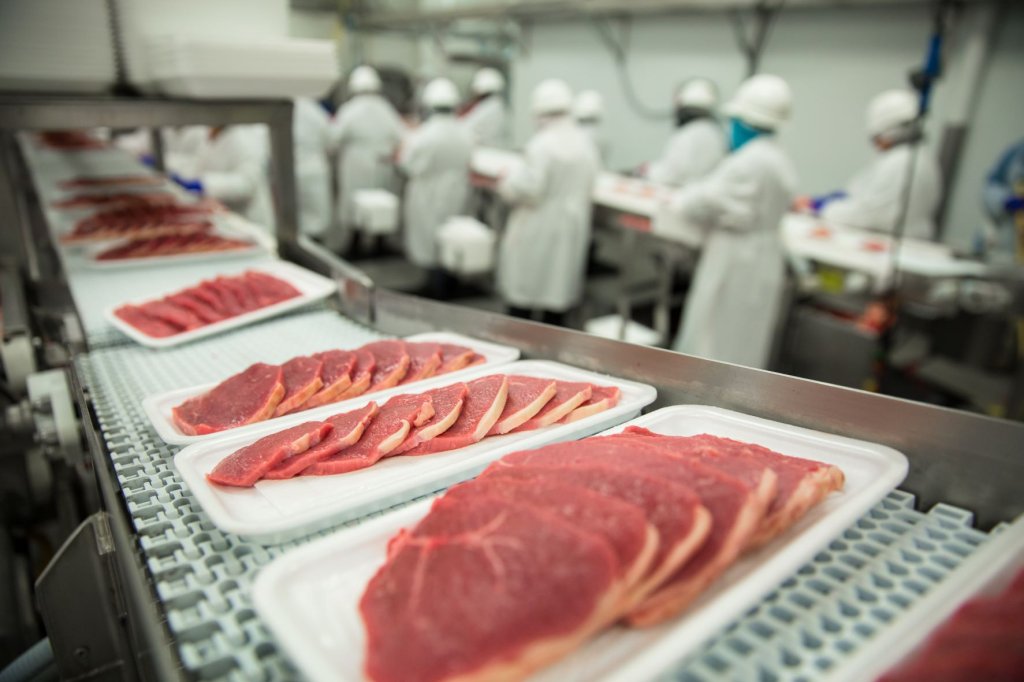Best Material for Prepping Raw Meat?
For a home kitchen or industrial food processing facility, storing, preparing, and packaging meat involves particular challenges. Safety is one of the first issues that come to mind. Meat that does not sit securely on a surface while being cut, sliced, or otherwise processed poses risks of injury. Cross-contamination can be a concern when handling multiple products, and limiting any exposure to bacteria is essential.
This is why when it comes to raw meat, low-density and high-density polyethylenes, along with a few other types of plastic, are often the materials of choice. Compared to metal or wood, plastics are lightweight and easier to machine. As a result, food-grade polymers are ideal for a wide range of applications in facilities specializing in processing meat, fish, and poultry and producing dairy products, baked goods, and confectionery.
Plastics That Can Handle Raw Meat Processing
There is no single plastic used for handling food and, in particular, raw meat. Depending on whether the plastic is used as a preparation surface, storage container, part of a conveyor system, or for packing, some plastics are more suitable than others.
Here is a rundown of how some common plastics are used in handling raw meat and other food and drink products:
- Low-density polyethylene (LDPE): LDPE is the least expensive material for plastic films. Transparent, flexible, and glossy, it strongly resists moisture, ripping, and chemicals. It is most frequently found in plastic bags but is also widely used in lids, squeezable food bottles, and frozen packing.
- Linear Low-Density Polyethylene (LLDPE): Similar to LDPE, LLDPE has superior heat-sealing properties and higher tensile and impact strengths. It is used chiefly in shrink wraps in the food and beverage sectors.
- Ultra Low-Density Polyethylene (ULDPE): ULDPE is a soft thermoplastic that resists flex cracks and has excellent low-temperature flexibility. Possessing high optical clarity and tear resistance, ULDPE is employed in the packaging of cheese, pork, and coffee.
- High-density polyethylene (HDPE): The most used polyethylene film for food handling is HDPE. It is solvent-resistant, semi-translucent, and the least flexible and most robust of the polyethylene films. In addition to being used for storage bins and conveyor systems, HDPE is the choice material for cutting boards and surfaces handling raw meat.
- Polyethylene Terephthalate (PET): PET is a high-performance, transparent thermoplastic that can be used to create films. PET film has high tensile strength, limited moisture absorption, and excellent dimensional stability across a wide temperature range. It is used for bags, wrappers, bottles, jars, and tubs containing both thawed and frozen raw meats.
- Polyvinylidene Chloride (PVDC): PVDC is a synthetic thermoplastic that is an excellent barrier against moisture and oxygen. Additionally, it is resistant to heat, chemicals, oil, and grease. This helps protect raw meats from contamination and unnecessary spoilage.
- Polyamide/Nylon: Polyamide, also called nylon, is a substance that is resilient and robust, has a high melting point, effectively blocks oxygen, and does not dissolve or absorb grease, oil, or acidic foods. Nylon has superior resistance to flex-crack, punctures, and scratches, making it ideal for food processing and conveyance.
Can You Cut Raw Meat on HDPE Cutting Boards?
Highly resilient cutting surfaces are a must in restaurants, superindustries, commercial and domestic kitchens, and many food processing facilities. HDPE, a polymer designed for durability, safety, and low maintenance, is frequently used to create these cutting surfaces. In addition, HDPE cutting surfaces can be produced to fit any consumer’s requirements in various thicknesses, shapes, surface textures, and colors.
Cutting boards made of HDPE are approved for use by the USDA, can be cleaned in both domestic and commercial dishwashers, and are resistant to mildew, stains, and moisture. HDPE offers a surface that is both handy and safe for food. Cutting boards made of HDPE are also resistant to chipping and have a lower risk of contaminating food when compared to cutting boards made of wood or other conventional materials.
Food Grade Plastic at Piedmont Plastics
Piedmont Plastics offers an extensive inventory of HDPE and other plastics for cutting boards, bins, conveyor systems, and more. We provide quick turnaround on orders, regardless of thickness and color, and can cut material to size, no matter how large or small the job. Our highly trained sales associates, located in over 50 locations throughout North America, can also provide expert technical information and help with your specifications.
Contact us today to find the best material for your next project.
